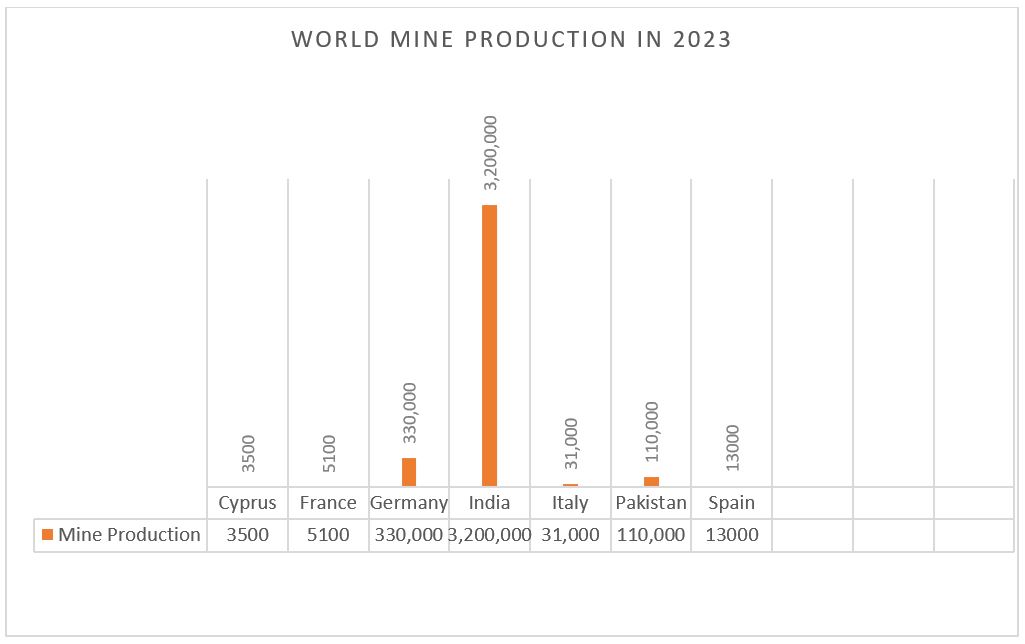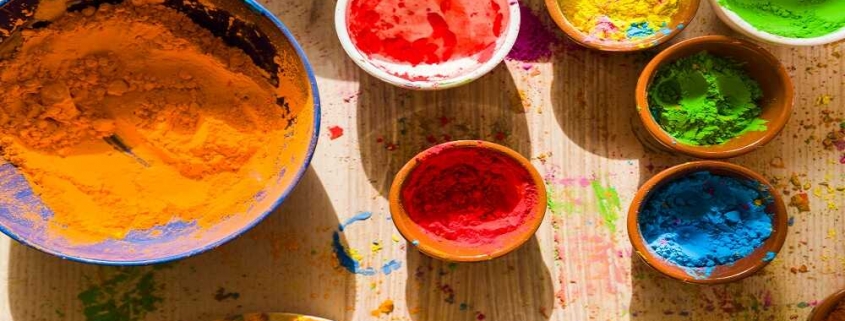Seeking Colors: Unveiling the Magnificence of Iron Oxide Pigments
Because of their exceptional qualities, iron oxide pigments are flexible colorants that are extensively employed in a variety of sectors. These pigments, which are made from iron oxide minerals, are good for a variety of applications due to their high tinting power, great lightfastness, and chemical stability. Iron oxide pigments are widely used in the construction sector to color bricks, asphalt, and concrete, giving structures and infrastructure strength and visual appeal. They are also utilized in the production of ceramics, paints, varnishes, and plastics, where they add vivid and durable colors. Furthermore, because iron oxide pigments are non-toxic and inert, they are used in the pharmaceutical and cosmetics sectors. Iron oxide pigments are essential in many industries due to their wide range of uses and advantageous qualities, which boost products and materials. Join us as we explore the “Iron Oxide Pigments” in this article that has evolved the industry.
Iron Oxide Pigments:
- Yellow Iron oxide Pigment
- Red Iron Oxide Pigment
- Black Iron Oxide Pigment
- Orange Iron Oxide Pigments
Let’s discuss each one in detail.
1. Yellow Iron oxide Pigment
Yellow iron oxide pigment is a versatile coloring ingredient that is well-known for its brilliant hue and exceptional performance features. It can be synthesized chemically or extracted from natural iron oxide minerals. This pigment is widely used in many different industries and is distinguished by its distinctive yellow color. Yellow iron oxide pigment is frequently used in the construction industry to tint asphalt, concrete, and mortar. This adds visual appeal to the materials while also making them more resilient to the elements and long-lasting. It is a favored option for outdoor applications because of its resilience to adverse climatic conditions. Furthermore, yellow iron oxide pigment is highly valued in the paint and coating sector for its exceptional tinting strength, lightfastness, and chemical stability, which allow for the creation of vivid and long-lasting yellow hues in paints, coatings, and stains. Furthermore, it is used in rubber, plastics, and ceramics to provide a wide variety of products with a vibrant yellow color. Because yellow iron oxide pigment is non-toxic and works well with a variety of formulations, it is used in the cosmetics and personal care industry to formulate makeup goods including lipsticks, nail polishes, and eyeshadows. Yellow iron oxide pigment is still an essential part of many sectors due to its dependability and versatility, which improves the appearance and functionality of a broad range of goods and materials.
In December 2022, following their recent deal to purchase the iron oxide pigment activities of Venator Materials PLC, Cathay Industries announced the opening of a state-of-the-art finishing and blending facility in Batam, Indonesia. The plant will start producing goods in late 2023, adding to Cathay Industries’ already extensive global reach.
2. Red Iron oxide pigment
Hematite, or red iron oxide pigment, is a popular colorant that is well-known for its remarkable qualities and bright red color. This pigment, which can be chemically synthesized or derived from natural iron oxide deposits, has exceptional thermal stability, lightfastness, and tinting strength. Many industries, such as building, coatings, plastics, and ceramics, are greatly attracted to its deep red color. Red iron oxide pigment is a common component used in the building industry to color bricks, pavers, concrete, and roofing materials. It gives architectural constructions strength and visual appeal. Similar to this, it is used in the coatings industry to make paints, varnishes, and protective coatings for everything from industrial gear to automotive finishes, adding vivid and durable red hues while guaranteeing corrosion resistance. Furthermore, red iron oxide pigment is often used in plastics to improve the UV resilience and aesthetic appeal of toys, consumer goods, and packaging. It is used in the ceramics industry to color and glaze ceramics, porcelain, and tiles, giving the final goods more depth and richness. Red iron oxide pigment is a very versatile, long-lasting, and visually appealing pigment that is used in many different production industries to improve a wide range of products and materials.
In November 2022, Cathay Industries made an announcement announcing that it had reached a deal with Venator Materials PLC to acquire its iron oxide pigment business. This acquisition will enable Cathay Industries to expand its global production presence while generating significant synergies and new growth prospects. The acquisition includes eight production facilities and one administrative site spread over six nations on four continents in addition to Venator’s product line.
3. Black Iron oxide pigment
Originating from iron oxide minerals, black iron oxide pigment is a multipurpose coloring ingredient that is well-known for its rich, opaque black color and remarkable resilience. Many different sectors find it to be a popular choice because of its longevity and strong pigment. Black iron oxide pigment is widely used in construction to color paving stones, mortar, and concrete. This gives the materials a polished, modern look while protecting them from fading and weathering. It also plays a crucial role in the production of black paints, stains, and coatings for industrial machines, automotive finishes, and architectural applications in the coatings and paints sector. Long-lasting performance in outdoor conditions is ensured by its resistance to chemicals and UV radiation, and its high tinting strength offers rich, consistent colors. Additionally, black iron oxide pigment is used in It adds rich, opaque black color to a variety of materials, from consumer goods to industrial components, in plastics, rubber, and textiles. It is used to provide strong pigmentation and improve the look of beauty items such as mascaras and eyeliners in the cosmetics and personal care industry. Black iron oxide pigment is still in high demand across many industries due to its adaptability, toughness, and rich black color. It enhances the appearance, functionality, and durability of a wide range of goods and materials.
In April 2023, Following the successful completion of the purchase of Venator’s color division, Oxerra, a new brand identity and name for Cathay Industries, a prominent global maker of iron oxide pigments, was introduced. Combining the products and services of both companies establishes Oxerra as a world-renowned leader in the coating, plastic, construction, and specialty industries. It also positions Oxerra as a manufacturer of comprehensive color solutions and a supplier of cutting-edge, sustainable, and innovative solutions.
4. Orange Iron Oxide Pigment
Because of its brilliant color and outstanding performance qualities, orange iron oxide pigment is a flexible coloring ingredient that is used extensively in a variety of sectors. This pigment, which is derived from iron oxide rocks, is widely sought-after for its rich orange color in a variety of applications. Orange iron oxide pigment is frequently used in the construction industry to color paving materials, mortar, and concrete. Because of its superior weather resistance and lightfastness, colored surfaces stay vibrant for longer periods even in the face of adverse weather conditions. Furthermore, orange iron oxide pigment is used in the coatings and paints sector to add warmth and brightness to a variety of goods, such as industrial coatings, automotive paints, and architectural coatings. Its ability to work with various solvents and binding agents makes it a recommended option for producers looking for reliable and long-lasting coloring. Orange iron oxide pigment is used in polymers, ceramics, and textiles in addition to building and coatings. It enhances the aesthetic appeal of a range of things made of plastic, such as consumer goods, toys, and packaging. It is an essential component of glazes and ceramic bodies used in the production of ceramics, helping to produce colorful and visually appealing tiles and pottery. Orange iron oxide pigment is also used in the textile industry to dye fabrics, providing a long-lasting and colorfast way to get vivid orange colors in apparel and household textiles. Overall, orange iron oxide pigment’s adaptability, robustness, and vivid hue make it a necessary component for a variety of sectors, improving aesthetic appeal and performance.
In June 2022, the plastics sector may color engineering plastics with high-performance, environmentally friendly colorants from the specialty chemicals business LANXESS. The company will showcase its product lines for the energy-efficient production of plastic goods that avoid reworking by eliminating the need for further coating at K 2022, which is scheduled to take place in Düsseldorf, Germany from October 19 to 26. This covers both general-purpose items and those tailored to specific needs. The property profile is determined by factors such as heat stability, color strength, resistance to light and weather, and brilliance, depending on the product.
As a safety precaution, orange is required for high-voltage components. Live wires in electric and hybrid cars as well as parts for high-voltage applications are increasingly being marked with this colour. The purpose of the signal colour is to warn emergency services and mechanics about the possible risk of electric shock. LANXESS has created a soluble organic dye that can be used to permanently colour polymers in the shade of orange found in RAL 2003. Macrolex Orange HT has exceptional colour strength and brilliance and is extremely heat-stable, light-fast, and weather-resistant. In contrast to most traditional colourants, the halogen-free Macrolex Orange HT is ideal for use with polyamide as well as other common plastics like polycarbonate and polyphenylene sulphide, which require high processing temperatures to be processed.
Figure 1: World Mine Production, 2023 (In Tonnes)

Source: USGS



